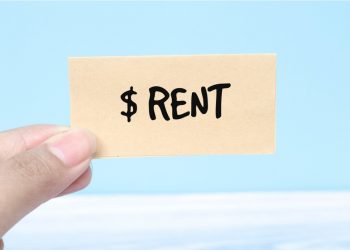RISMEDIA, August 3, 2010—Last week I had two opportunities to experience America’s foreclosure crisis up close and personal. The first was a continuing education program for attorneys who represent or intend to represent homeowners fighting unlawful foreclosures.
The other was a public workshop which I conducted for consumers and real estate practitioners.
On Thursday, lawyers from California gathered in San Diego to bone up on the complexity of foreclosure defense practice. I wanted to see and hear right from the front lines about the most recent battles being waged. I had hoped to come away with the magic bullet formula for a foreclosure defense.
Given the size of the state and the sheer number of foreclosures, it was disappointing to see only 17 law firms represented. With 400,000 foreclosures expected in California, it is apparent that finding legal representation will continue to be one of the most difficult obstacles to fending off an unlawful foreclosure.
In California and 29 other states, non-judicial procedures have allowed foreclosure mills with no financial or legal stake in the property to evict even non-defaulting borrowers from their homes.
Make no mistake, though unlawful, this is a very lucrative enterprise. Participants have little to lose by flouting a host of laws. In non-judicial states, most homeowners do not even know how to stop the foreclosure process.
Very few have the resources to fight back, and the courts, apparently out of fear of an exploding case load of people fighting to keep their homes, routinely grant the lenders dismissal with prejudice; thereby, terminating all of the plaintiff’s rights in the matter before the defendant even has to establish their right to seize the property.
While some litigants attempt to represent themselves, few are having much success. The cases are complex, the roles are reversed, and one side has all the proof.
Kent C. Wilson, one of the panelists, is the sole owner of a small law firm consisting of six lawyers engaged in business and real estate litigation. He was by far the most experienced litigator with over 500 cases. Unfortunately, the toll of these cases showed on him and he moved like a man who had recently undergone a brutal beating.
What is so frustrating for everyone who attempts to assist plaintiffs is that the law is very clear; and, the facts prove the allegations. But, the attorneys for the foreclosure mills have controlled the narrative from the beginning and are convincing judges, often through forged documents, that they somehow have a claim to the property.
The process is backward. In every other area of the law, the entity seeking relief would have the burden of proof. In states requiring a judicial proceeding for a foreclosure to occur, the homeowner is the defendant and has the opportunity to challenge the foreclosure mill to prove that they are the true party in interest, that they came by that interest according to law, and that there is an obligation outstanding.
But, in non-judicial states, foreclosure mills are avoiding any scrutiny by the court. Ironically, they also possess the documentation needed by the plaintiff to demonstrate to the court how the plaintiff was the target of predatory lending that was motivated by a larger fraud.
Here is where it all breaks down: in numerous judicial districts, including some here in Southern California, despite a 138 year old ruling of the California Supreme Court and a recent decision of a California appeals court, Superior Court judges routinely dismiss homeowner’s suits without allowing the homeowner to prove their case.
One of the sentiments that came through during discussion was extreme frustration with a broken system. Judges overlook manufactured evidence, perjured testimony, lack of standing, lack of evidence of damages, and simply award homes to individuals who have never identified themselves to the court.
Do judges have a conflict of interest? At minimum, many have mortgage loans. Have they received a favorable loan from one of the defendants?
Have judges been threatened with foreclosure if they make a favorable ruling on behalf of a homeowner? Given the state of the courts, how could the judge even hope to stop his own foreclosure?
Although victories for homeowners have been few and far between, they are starting to come with greater regularity, and most center on the issue of lack of standing as the result of securitization.
In California, the trick is finding a way to get the judge to compel the defendants to produce the documentation necessary to prove that they have standing and a valid claim. So far, every request for this type of discovery has been thwarted.
The facts and the evidence are like a deck of cards—putting together a winning hand takes planning, strategy, flexibility, and fast decision making. You do the best you can with the cards you are dealt.
Often homeowners wait until the eleventh hour to start to fight back; then it can become an uphill battle.
Brian Andrews, a San Diego attorney with about two dozen cases said, “Consumers need to act as soon as they foresee a problem. Knowledge is power, don’t wait.”
Because I agree that knowledge is power, I have been eager to conduct a workshop on the impact of securitization on foreclosure law. Saturday finally brought that opportunity and a chance to interact with homeowners who are somewhere in the foreclosure process.
Most were pro se litigants trying to represent themselves with limited to no legal guidance. Some had already paid a series of lawyers and rescue scams, but were getting no better results than the pro se litigants.
But, the one thing that was apparent from both of these events is that those who put up a fight in a non-judicial state are at least buying time. And, time is on their side. This issue is coming to a head, and the more homeowners who take action against their lenders, the sooner we will get a resolution that both homeowners and any true creditors, if any exist, can live with.
Until then, I salute the legal professionals who take these cases and the homeowners who have the courage to fight back against a massive, pernicious and ongoing fraud.
After achieving a homeownership rate of 70%, we are now at the lowest rate of ownership in 10 years. What Wall Street did to Main Street will be felt for a very long time, years to come, but thanks to a few dedicated legal eagles, we are finding a way to fight back and keep American’s in their homes.
George Mantor is a nationally respected authority on all areas of real estate and is frequently quoted in a wide range of publications. He is an oft invited guest of Fox Business Network and for many years, he was the host of “Keepin’ It Real…Real talk about the real thing, real estate” on KCEO radio. His articles have also recently appeared in Real Estate Finance, The Real Estate Professional, National Real Estate Investor, Broker Agent News, and Realty Times. His blog is http://www.realtown.com/gwmantor/blog.










